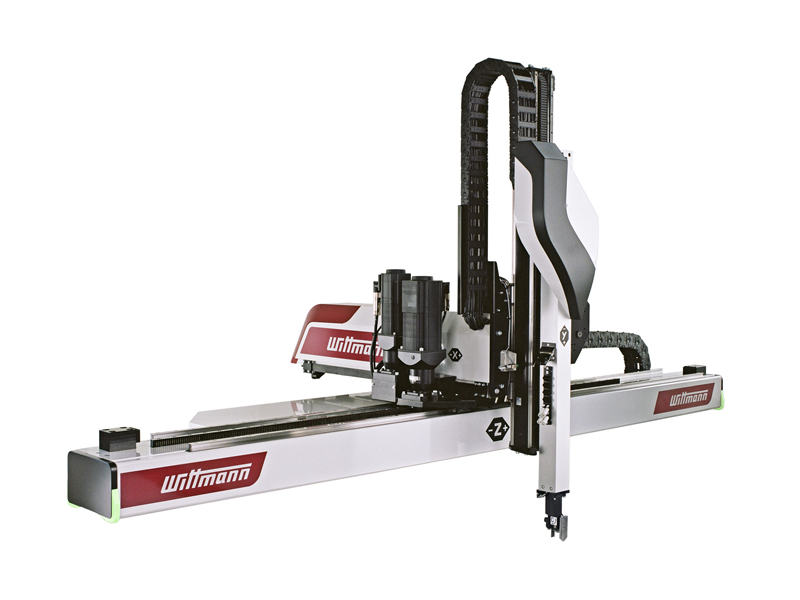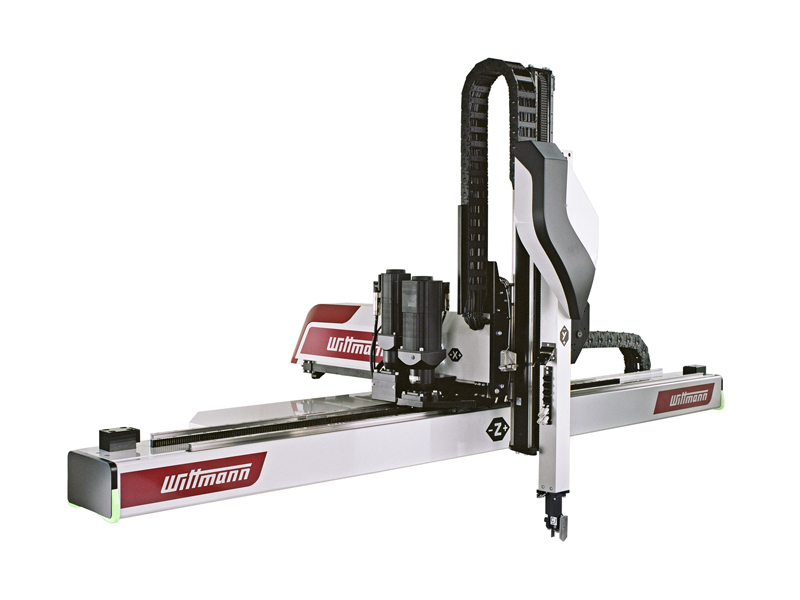
WITTMANN has been known worldwide for decades as a maker of high-quality robots. Its standard parts removal appliances have been continuously improved over recent years. To meet the more and more stringent demands from customers and simplify the choice, WITTMANN developed the PRIMUS series two years ago. PRIMUS robots are typically used for pick-&-place applications. At the K 2019, WITTMANN presented a new series for the first time: the SONIC robots.

In contrast to the introduction of the PRIMUS series, WITTMANN is now rolling out the SONIC series with several types of appliances all at once. The models currently available are SONIC 131, SONIC 142 and SONIC 143. These robots cover a clamping force range from 150 to 500 t. The new SONIC robots are based on the well-known UHS appliances (UHS = Ultra High Speed), which WITTMANN has been producing for more than 20 years. Parts removals with a total robot cycle time of less than 8 seconds are known as ultra high speed removals. The SONIC series can be used for parts removals down to 4 seconds robot cycle time. But short-cycle applications are only one of many possible uses, since applications which require longer production times can also benefit from these highly dynamic appliances. Gripping times below 1 second contribute to significantly improving the productivity of such production cells, too.
Consequently users can benefit from a number of additional advantages. For safe parts removal, the mold closing process is only released if all parts have remained inside the gripper. Compared to free falling parts production, this method involves only a minimal lengthening of the cycle time. Further benefits for users are also improved surface quality, and the possibility to have the parts deposited in the form of stacks, each containing an equal number of parts, which simplifies subsequent handling and packaging.
The appliances currently available cover a load capacity range from 3 to 7 kg. To prevent – in line with the typical slender gripper design for such applications – any additional interfering contours from entering the mold area, the entire electric and pneumatic power supply for the gripper is located inside the vertical axis in SONIC robots. As is customary in other WITTMANN robots, too, the gripper valves and inlets are seated directly on the vertical axis to ensure short response times. The SONIC robots are available with the following strokes as standard:
Axis configurations going beyond these ranges are available upon request. This series owes its extraordinary dynamism to acceleration rates of 65 m/s². (These rates exceed those of the currently fastest roller-coaster worldwide, the Formula Rossa, whose passengers are exposed to acceleration pressures of up to 4.8 g.)
At the K 2019, the new SONIC robot series was shown with two appliances. At the booth of WITTMANN BATTENFELD, a SONIC 143 handled the 48-fold removal of medical plastic parts (blood vials). At the WITTMANN booth, a SONIC 142 tandem robot was shown: two robots on one Z carrier axis demonstrated ultimate precision with extremely dynamic movements.
The SONIC series from WITTMANN is immediately available from now on.
The WITTMANN Group is a worldwide leader in the production of injection molding machines, robots and peripheral equipment for the plastics processing industry, headquartered in Vienna/Austria and consisting of two main divisions: WITTMANN BATTENFELD and WITTMANN. These two divisions jointly operate the companies of the WITTMANN Group with eight production plants in five countries. Additional sales and service companies are active in 34 facilities in important plastics markets around the world.
WITTMANN BATTENFELD pursues the further expansion of its market position as an injection molding machine manufacturer and specialist for state-of-the-art plastic processing technologies. As a supplier of comprehensive, modern machine technology in modular design, the company meets both present and future market demands for plastics injection molding equipment.
The WITTMANN product portfolio includes robots and automation systems, material handling systems, dryers, gravimetric and volumetric blenders, granulators, temperature controllers and chillers. With this diversified range of peripheral units, WITTMANN offers plastics processors solutions to cover all production requirements, ranging from independent production cells to integrated plant-wide systems.
The integration of these various segments under the umbrella of the WITTMANN Group has led to complete connectivity between the various product lines. This integration has greatly benefited plastics processing users, who are increasingly looking for seamless production, including automation and peripheral functions.
For more informations visit fortuna.gr